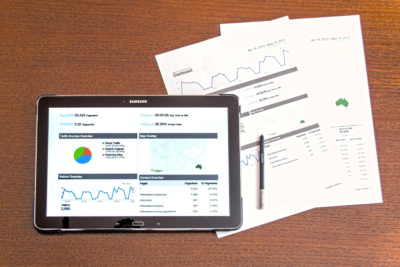For the past 20 years, IT teams have relied primarily on Application Performance Monitoring (APM) to manage and troubleshoot applications. Usually, APM periodically samples and aggregates application and system data, called telemetry, that’s known to be related to application performance issues. It analyzes the telemetry relative to Key Performance Indicators (KPIs) in business.
It also assembles the results in a dashboard for alerting operations and support teams to abnormal conditions that should be addressed to resolve or prevent issues. Digital teams use APM Solutions and APM Tools to view and address the many variables that can impact an application’s performance. Without these tools, teams struggle to resolve the numerous issues.
As well as other technical problems that can arise—this raises the likelihood of customers becoming frustrated by the poor experience and abandoning the app altogether. Bear in mind, that every day, most business customers use application tools to shop, stream TV shows and movies, connect to social media, manage finances, and work. All this while mostly working from home.
In other words, these business customers rely more than ever on these applications to conduct their daily lives. When an app crashes, is slow to load, or doesn’t load at all, users become frustrated, which can cause the business to suffer brand damage or lose revenue. Still, when an internal business application begins to falter, the company may also see reduced employee productivity.
For such and other related reasons, that’s where an Application Performance Monitoring Software kicks in. An APM for modern, cloud-native environments extends observability beyond system availability and service performance and response times. Automatic and intelligent observability helps organizations improve user experiences at the scale of modern computing.
Understanding An Application Performance Monitoring (APM) Software Is
On the one hand, an Application Performance Monitoring (APM) is the process of using software tools and telemetry data to monitor the performance of business-critical applications. In this case, most businesses and organizations would want to ensure that they maintain expected service levels and that customers receive a positive application experience. Thus, they use APM tools.
In particular, these tools help them to deliver real-time data and insights into the performance of applications. Then, IT teams, DevOps, and site reliability engineers can quickly pinpoint and troubleshoot application issues. On the other hand, an Application Performance Monitoring (APM) Software is a tool that helps an organization ensure that its critical applications are met.
As well as the established expectations for performance, availability, and customer or end-user experience. In most cases, it does this by measuring application performance and alerting administrators when performance baselines aren’t fully satisfied. Simultaneously, it provides visibility into the root causes of performance issues and automatically resolves them.
It also addresses many performance issues before they impact users or the business. APM is also an abbreviation for application performance monitoring. The terms are often used interchangeably, but application performance monitoring is a component of many application performance management—because after all, you have to monitor performance to manage it.
The Application Performance Monitoring (APM) Core Features And Benefits
Mobile apps, websites, and business applications are typical use cases for monitoring. However, with today’s highly connected digital world, monitoring use cases expand to the services, processes, hosts, logs, networks, and end-users that access these applications — including a company’s customers and employees. The focus of application monitoring for performance is straightforward.
It’s focused on specific metrics and measurements; application performance management is the wider discipline of developing and managing an application performance strategy. All these terms refer to related technology and practices. APM gives businesses increased visibility and intelligence into the performance of applications and their dependencies to detect and pinpoint issues.
APM has rapidly expanded to encompass a broad range of technologies and use cases. According to Gartner, “Application performance monitoring is a suite of monitoring software comprising digital experience monitoring (DEM), application discovery, tracing and diagnostics, and purpose-built artificial intelligence for IT operations.” APM has additional meanings.
It is also referred to as:
- Application Performance Management
- Performance Monitoring or Application Performance
- Application Monitoring or Application Performance Monitoring
Increasingly, application performance management (APM) software applications and solutions are evolving from relying on traditional application performance monitoring tools to incorporating observability, a performance data collection and analysis technology better suited to the complexity of modern, distributed cloud-native applications.
The Gartner Magic Quadrant for Application Performance Monitoring, a leading industry report on APM, provides a clear definition of APM’s core capabilities as they have matured. These capabilities set the bar for modern APM solutions.
Consider the following:
- Automatic discovery and mapping of application and its infrastructure components to maintain real-time awareness in dynamic environments
- End-to-end observability of an application’s complete HTTP/S transactional behavior to understand the effect on business outcomes and user experience
- Mobile and desktop application monitoring on mobile and desktop browsers to track user experience across platforms
- Root-cause and impact analysis of application performance problems and business outcomes for faster, more reliable incident resolution
- Integration and automation with service management tools and third-party sources to keep pace with an expanding and evolving infrastructure
- Business KPIs and user journey analysis (for example, log in to check out) to optimize user experiences and provide transparency into how changes impact KPIs
- Endpoint monitoring to understand how mobile applications impact endpoint devices and identify issues with those devices
- Virtual desktop infrastructure (VDI) monitoring to maximize employees’ productivity using VDI.
Again, APM gathers software application performance data, analyzes it to detect potential performance problems, and provides information or takes action to accelerate the resolution of those problems. The chief difference in how they gather and analyze the data is the difference between application performance monitoring and observability. Its capabilities extend into many areas.
The most common ones:
- API monitoring to understand how third-party services impact application performance
- Application architecture to gain insights into how application architecture changes impact performance and user experience
- Service monitoring to understand how individual services interact and their impact on overall application performance
- Container monitoring to help understand the context and performance impact of individual containers
- End-user experience monitoring to help you understand how changes to applications affect your end users
In most cases, digital teams often find it challenging to find the root cause of an application performance problem. Reasons can run the gamut — from coding errors to database slowdowns to hosting or network performance issues. Even a conflict with the operating system or the specific device used to access the app can degrade an application’s performance.
APM gives businesses increased visibility and intelligence into the performance of applications and their dependencies to detect and pinpoint application performance issues before actual users are impacted. APM delivers an impressive and expanding list of technical benefits and business benefits.
Technical Benefits
Business, operations, application, and development teams can expect to enjoy several practical benefits from adopting APM practices and tools
Such as follows:
- Increased application stability and uptime
- Reduced number of performance incidents
- Faster resolution of performance problems
- Faster and higher-quality software releases
- Improved infrastructure utilization
Business Benefits
Those in the boardroom have just as much to gain from adopting APM solutions as those on the front lines of DevOps efforts.
Some business benefits include:
- Improved developer and operational productivity
- Increased time spent on innovation
- Better user experiences
- Increasing revenue
- Reduced operational costs
- Increasing conversion rates
Long-time APM users also report that APM has given their organizations some unexpected advantages. Most prominent among these positives is the ability to collaborate more easily. The new insights and reliable intelligence afforded by a good APM solution enable teams across the organization to be more confident.
This single source of reliable intelligence all parties can agree on helps application, operations, and development teams to align faster and easier when problems arise and to work together more effectively. More effective collaboration helps couples resolve issues more quickly, which can make frustrating war rooms a thing of the past.
As a result, leaders see increased job satisfaction among their team members, leading to higher staff retention.
The Difference Between APM Tools Vs. APM Platforms
APM tools are often designed to look at one specific aspect of application performance. These point solutions can help identify specialized issues. Over time, organizations often find themselves using multiple APM tools that don’t necessarily integrate with one another or provide comprehensive insight into the application environment.
APM platforms provide a single integrated platform using AI and automation to deliver a precise, context-aware analysis of the application environment. Organizations can continuously monitor the full stack for system degradation and performance anomalies by utilizing an APM platform.
With the deluge of telemetry data that comes with cloud-native apps comes a profusion of performance monitoring tools and platforms. Organizations can take one of two approaches when picking APM tools. By default or by design, different teams may deploy a combination of point solutions.
Or, they may choose a single platform that more fully encompasses the many layers and use cases within the application environment. Point solutions can pose benefits at a local level and challenges at a macro level, while a platform approach embraces a modern vision of APM that demonstrates clear advantages at the local and macro levels.
Modern applications such as mobile apps, websites, and business apps may seem simple on the surface, but they are actually highly complex. Millions of lines of code comprise these applications, and they include hundreds of interconnected digital services and open-source solutions, and run in containerized environments hosted across multiple cloud services.
1. Performance
In application performance monitoring, agents are deployed throughout the application environment and supporting infrastructure, to ‘monitor’ performance by sampling performance and performance-related metrics (sometimes called telemetry) usually as frequently as once every minute. Types of monitoring these agents perform include:
2. Experience
It gathers performance metrics—such as load time, response time, uptime, downtime - from the user interface on the end-user device. Initially, this used to be be called end-user experience monitoring. But it was later broadened to acknowledge the non-human entities, such as robots or other software components. The acknowledgement was that they also interact with the app.
And that they have performance expectations of their own. Digital experience monitoring usually supports real-user monitoring, which monitors the experience of an actual user on the system. In addition to the synthetic monitoring—for performance testing in production and non-production environments.
3. Workability
This includes monitoring of the entire application stack—application framework (e.g., Java or .NET), operating system, database, APIs, middleware, web application server, UI—as well as IT infrastructure monitoring that samples factors such as CPU utilization, disk space, and network performance. Stack monitoring typically includes code-level tracing. Eventually, this can help spot portions of code that might be causing a performance bottleneck.
4. Database
On the one hand, database monitoring samples the performance of SQL queries or procedures and the data monitoring provided by application monitoring agents. On the other hand, availability monitoring monitors the actual availability of application and hardware components (because applications can generate performance data even when they aren’t accessible to the end user).
5. Visualization
In addition to collecting performance data, these agents perform user-defined transaction profiling, tracing each transaction from the end-user UI or device through every application component or resource involved. This information is used to determine application dependencies, and to create a topology map — a visualization of the dependencies between apps and the infrastructure.
Such components, ideally cuts across on-premises, private cloud, public cloud—including any Software-as-a-Service (SaaS) solutions—and or hybrid cloud environments.
How An Application Performance Monitoring (APM) Software System Works
With the likes of IBM Cloud Pak® for Watson AIOps, you’ll embrace Artificial Intelligence (AI), Machine Learning (ML) and automation to help ITOps managers and Site Reliability Engineers (SREs) address incident management and remediation. Innovate faster, reduce operational cost and transform IT operations (ITOps) across a changing landscape with an AIOps platform.
In particular, an AIOps platform that delivers visibility into performance data and dependencies across environments. Eqaully important, SRE uses software engineering to automate IT operations tasks that would otherwise be performed manually by systems administrators. With these software systems, you can achieve new levels of efficiency and resiliency in your IT operations.
Still, as you future-proof your IT operations with AI, an APM software system helps your to learn how AI for IT improves business outcomes, leads to increased revenue, and lowers both cost and risk for organizations. You’ll also gain full visibility into your application and infrastructure resource allocation which contribute to user response time and any resource congestion.
In application performance monitoring, agents are deployed throughout the application environment and supporting infrastructure, to ‘monitor’ performance by sampling performance and performance-related metrics (sometimes called telemetry) usually as frequently as once every minute. The most common types of monitoring these agents perform are as follows:
1. Experience Monitoring
Digitally, an APM gathers performance metrics - such as load time, response time, uptime, downtime - from the user interface on the end-user device. (This used to be be called end-user experience monitoring, but was broadened to acknowledge that non-human entities, such as robots or other software components, also interact with the application.
And they have performance expectations of their own. Digital experience monitoring usually supports real-user monitoring, which which monitors the experience of an actual user on the system, and synthetic monitoring, for performance testing in production and non-production environments.
2. Application Monitoring
This includes monitoring of the entire application stack - application framework (e.g., Java or .NET), operating system, database, APIs, middleware, web application server, UI - as well as IT infrastructure monitoring that samples factors such as CPU utilization, disk space, and network performance. Stack monitoring typically includes code-level tracing.
Effectively, this is something that can help spot portions of code that might be causing a performance bottleneck. So you can innovate faster, reduce operational cost and transform IT operations (ITOps) with an AIOps platform that delivers visibility into performance data and dependencies across environments.
3. Database Monitoring
In this case, an APM software system samples performance of SQL queries or procedures, in addition to the datase monitoring provided by application monitoring agents. You can continuously automate critical actions in real time—and without human intervention—that proactively deliver the most efficient use of compute, storage and network resources to your apps at every layer of the stack.
Discover the leading enterprise observability platform for hybrid clouds. Improve application performance management and accelerate CI/CD pipelines no matter where applications reside.
4. Availability Monitoring.
An APM monitors the actual availability of application and hardware components (because applications can generate performance data even when they aren’t accessible to the end user). As mentioned, these APM solutions typically provide a controller and centralized dashboard where the collected performance metrics are aggregated, analyzed and compared to established baselines.
The dashboard alerts system administrators to deviations from baselines that indicate actual or potential performance issues; it also provides contextual information and actionable insights administrators can use to troubleshoot and resolve the issues.
5. Admin Observations
APM solutions typically provide a controller and centralized dashboard where the collected performance metrics are aggregated, analyzed, and compared to established baselines. The dashboard alerts system admins to deviations from baselines that indicate actual or potential performance issues. It also provides contextual information and actionable insights to the administrators.
Periodic sampling is effective enough for monitoring and troubleshooting monolithic applications or traditional distributed applications, where new code is released periodically, and workflows and dependencies between application components, servers, and related resources are well-known or easy to trace. But today, most organizations are adopting modern development practices.
As well as other cloud-native technologies — Agile and DevOps methodologies, microservices, Docker Containers, Kubernetes, and serverless functions. They’re deploying new application components so often, in so many places, in so many languages and for such widely varying periods of time that the once-a-minute data sampling of traditional monitoring solutions can’t keep up.
Observability swaps traditional monitoring agents with instrumentation that collects performance and contextual data non-stop, and uses machine-learning techniques to correlate and analyze the data in real-time. With an observability solution, development, IT operations, and Site Reliability Engineering (SRE) teams can do and achieve quite a lot.
Consider the following:
- Discover and address ‘unknown unknowns.’ Traditional monitoring looks only for known deviations from known baselines. An observability platform’s machine-learning functionality can detect patterns in performance telemetry to identify new deviations that correlate with performance problems.
- Catch and resolve issues early in development. Observability lets DevOps teams bake monitoring into the early phases of software development process, so they can test, identify and fix issues in new code before they impact the customer experience or service level agreements (SLAs).
- Scale observability automatically. For example, developers can specify observability instrumentation as part of a Kubernetes cluster configuration, so that any new cluster starts gathering telemetry from the moment it spins up, until it spins down.
Note that observability doesn’t replace monitoring; it enables better monitoring, and better APM. It’s time to predict and prevent performance issues before they impact your business with application performance management
AI And AIOps: How Is The APM Technology Future Like?
In other words, an Application Performance Management (APM) Software helps an organization ensure that its critical applications meet established expectations. It does this by measuring application performance, alerting administrators when performance baselines aren’t met, providing visibility into root causes of performance issues, and automatically resolving the issues.
Today APM tools are leveraging observability and AI in varying degrees. Some are combining traditional application performance monitoring with AI to automate discovery of changing transaction paths and application dependencies. Others are combining observability with AI to automatically determine performance baselines, and to sift signals, or actionable insights.
Especially from the ‘noise’ of IT operations management (ITOM) data. Industry analyst Gartner finds that organizations can realize a 60% noise reduction in ITOM through use of AI-augmented tools. The ultimate goal—and the future of APM and IT operations—is to combine observability with artificial intelligence for IT operations, or AIOps, to create self-healing process.
As well as a self-optimizing infrastructure. Together, the steady stream of real-time observability telemetry and AIOps machine learning and automation can predict app issues based on system outputs. And resolve them before they impact the end-user experience or operations, or even take actions to optimize application performance — all without management intervention.








